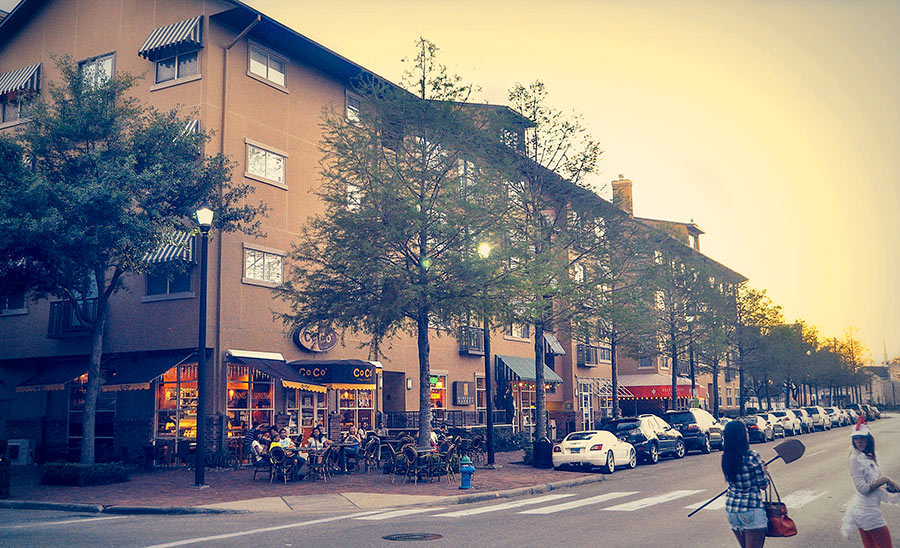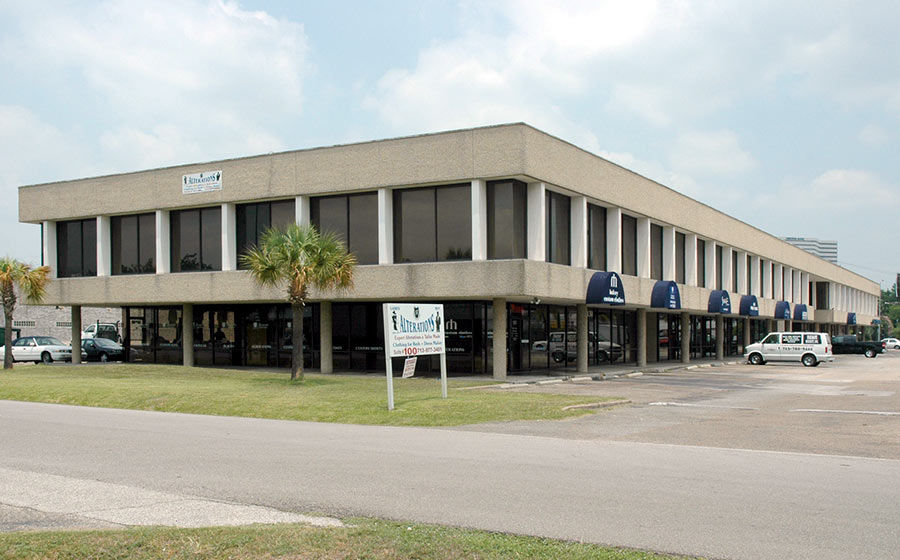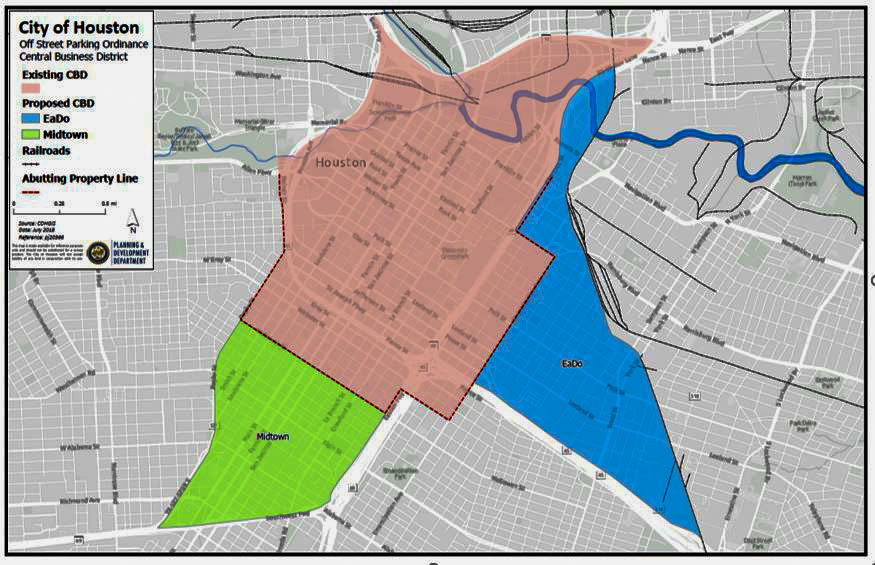WALK THIS WAY  Only 17 percent of projects eligible for incentives included in the city’s 8-year-old Transit Corridor ordinance have taken advantage of them, reports Hilary Ybarra. So the next city initiative aimed at walkability will take a different approach: “The recently established Walkable Places Committee has been tasked with reevaluating the city code to dive deeper into the issue of walkability in Houston. The committee is currently focused on creating an application-based process to establish specific ‘walkable place’ areas,” she writes. “Under this new system, any neighborhood could voluntarily apply to become a ‘walkable place’ and in doing so establish their own set of self-defined unique rules for development to encourage walkability. These rules would include specific regulations covering the building setback, design of the pedestrian realm, landscaping, pedestrian friendly building design, and parking (a separate subcommittee has been formed exclusively to deal with parking).
But once adopted, unlike the Transit Corridor Ordinance, neighborhood- and site-specific building rules would be required, not optional, for all new development. Though still in the early planning stages — adoption of a new ordinance is targeted for 2019 — the proposal certainly faces challenges. How will a neighborhood come to consensus on new guidelines? What are the incentives to apply to become a ‘walkable place?’ What will trigger the application of the new guidelines to existing development? Are historic structures exempt? And perhaps most importantly, what about the spaces between and connecting to the specific neighborhoods?” [The Urban Edge] Photo of Gray St., Midtown:Â Mark Taylor Cunningham (license)
Only 17 percent of projects eligible for incentives included in the city’s 8-year-old Transit Corridor ordinance have taken advantage of them, reports Hilary Ybarra. So the next city initiative aimed at walkability will take a different approach: “The recently established Walkable Places Committee has been tasked with reevaluating the city code to dive deeper into the issue of walkability in Houston. The committee is currently focused on creating an application-based process to establish specific ‘walkable place’ areas,” she writes. “Under this new system, any neighborhood could voluntarily apply to become a ‘walkable place’ and in doing so establish their own set of self-defined unique rules for development to encourage walkability. These rules would include specific regulations covering the building setback, design of the pedestrian realm, landscaping, pedestrian friendly building design, and parking (a separate subcommittee has been formed exclusively to deal with parking).
But once adopted, unlike the Transit Corridor Ordinance, neighborhood- and site-specific building rules would be required, not optional, for all new development. Though still in the early planning stages — adoption of a new ordinance is targeted for 2019 — the proposal certainly faces challenges. How will a neighborhood come to consensus on new guidelines? What are the incentives to apply to become a ‘walkable place?’ What will trigger the application of the new guidelines to existing development? Are historic structures exempt? And perhaps most importantly, what about the spaces between and connecting to the specific neighborhoods?” [The Urban Edge] Photo of Gray St., Midtown:Â Mark Taylor Cunningham (license)





Eliminate the current parking ordinances and Houston will become more walkable overnight. It’s that simple.
Planners gotta plan: a short story.
Planner1: We have this set of rules that don’t do any good and makes it illegal to do something that I think is good.
Planner2: Why don’t we remove/lessen the rules.
Planner1: Nah, let’s institute a series of convoluted overlays and neighborhood centric application processes designed by “citizens”.
The End
Trying to make Houston walkable is like trying to make Fargo, North Dakota a premier Caribbean beach destination. It requires ignoring physical location, climate, culture, infrastructure, and economics.
“a separate subcommittee has been formed exclusively to deal with parking”
Translation: we’re throwing those poor SOB’s under the bus as soon as the “strangers might park in front of my house” crowd starts complaining.
Since blanket elimination of parking minimums is probably off the table, how about these rules, for a start:
1 – Each “walkable place” is automatically designated a special parking area, freeing each individual development from having to provide its own parking.
2 – 5-year tax abatement for structured parking, as long as there is ground-floor retail along pedestrian areas.
3 – Property owners on nearby residential streets may set hourly parking rates at any level they choose, from free all the way up to $1000/hr. Residents and non-residents pay the same rate.
Sounds like the ultimate in officially-sanctioned NIMBYism.
I like where they’re trying to go with this letting neighborhoods decide. Nabes could compete with each other to attract walkabillies with attractive shaded areas etc. But I think the final say should be with the existing businesses and land owners where each could opt in or out of whatever is decided. Some businesses would die without convenient parking for example…but any new businesses or when land changes hands they would have to abide by the neighborhood codes.
Malls and strip centers are the modern walkable places. There is no going back.
I was in the Galleria. It was very walkable, I would walk in the Galleria anytime. I was at Bay Brook, it was walkable too.
I had a reason to go to both those places and walk: There was a large concentration of retail, food and entertainment. I also had no concern about the weather while I was there. Retailers put stores in malls and strip centers, because malls and strip centers are the only modern urban form that can generate the number of patrons to make the business profitable. Developers, 98 percent of the time, would rather develop a mall or strip center because that is the only way to be sure they can sign tenants. There is no way around this and there is no going back.
I live inside the Loop and don’t mind if people park in front of my house as long as they (a) don’t leave bodily waste in my front yard, (b) don’t block my driveway, and (c) leave room for someone else to park (there is enough room for two full-sized cars). Actually, if there are cars parked in front of my house, it looks like there’s someone home even when there isn’t.
Their first step at making Houston more walkable should be to make it illegal for drivers to turn on red and implement an all red light time at all intersections for pedestrians to cross (when the button has been pressed). Too many reckless, distracted drivers around the city for it to feel safe. A driver almost ran over me and my sister just this past weekend downtown near Discovery Green because he was speeding into a turn while we were crossing the street with the white walk sign.
Several of the commenters seem to be missing the point of a Walkable Places Committee. In one sense a mall is walkable, but it is not truly a walkable place if you have to drive to get there. Also a walkable place is not the same thing as a retail destination. This committee is focusing on commercial areas, but a residential neighborhood or civic space or office district could also be walkable depending on how they are designed and executed.
While reducing the amount of (free) parking provided will be necessary to make Houston more walkable, it is not that simple. As you all surely know, Houston has large numbers of streets without sidewalks, with open drainage ditches, or without a safe place to cross the street.
Well, in spite of “physical location, climate, culture, infrastructure, and economics,” there are some large and prominent spaces in Houston that both accommodate cars and are pedestrian ideals: the campuses of UH, Rice, UST, and Texas Southern. Visit those places and walk in them, commonsense, and learn.
I recently moved back to Houston after living in Colorado for a few years. I still find myself in the habit of coming to a complete stop any time that I see a pedestrian attempting to cross a street. In CO, it is state law to stop at any legal pedestrian crossing should someone be there. Many of those crossings have signage that illuminates when the pedestrian presses the button to cross. Some even illuminate the crosswalk itself á la Galleria crosswalks, but it’s expected that you stop whether those are in place or not. Also, most people there abide by the rule of allowing people to cross at major intersections (traffic lights) before passing through in their vehicles; this is something that my fellow Houstonians always honk at me for doing here.
AVP- City planners are good people who are made to enforce rules created by elected officials; often times who have no background or knowledge of modern planning practices #OurHandsAreTied
Folks of a certain age like indoor malls for walking: temperate climate, even surfaces, no cars. But all you hear about now is how these malls are dying off.
@John – it is usually not appropriate to drive faster than 20mph downtown. I know that at do that where necessary, which is mostly everywhere. Too many people like to think they are F1 drivers. There are so many pedestrians, random construction and streets blocked off, parked delivery trucks and insane potholes that will destroy your car, not to mention the road ragers. Drive safe, everyone.
GoogleMaster, I agree, but would change your comment to add any that waste is unacceptable — cups, napkins, bottles, etc.; and 2) unless you have too many people parking at your house vs. your available parking. (i.e., frontloader townhouse with 5 millennials and a garage full of stuff (not cars) or if you put rocks in front of your house to discourage parking on your grass).
@John It seems counter intuitive but “right on red” actually saves lives by allowing more cars to execute a right turn, while there are supposedly no pedestrians on the crosswalk. Cities which do not allow right on red, like New York City actually have more auto pedestrian collisions than cities like Houston. In New York, as soon as the light turns green, pedestrians step into the street at the same time as cars make the right turn. In Houston, the majority of cars have already turned right before the light turns green. There is a much higher incidence of jay walking in NYC as pedestrians attempt to front run the right hand turners by crossing on the red light. Your idea of giving a pedestrian control of all four lights at an intersection with the mere push of a button is a non-starter. Those buttons exist only to make you think you have some control over the traffic and keep you behind the curb until the signal timer clicks green for you.
@jardinero1 – the issue with RTOR is not pedestrians being hit at the end of the turn on red but at the beginning. Pedestrians crossing when they have signal to do so are being hit by cars approaching red intersections planning to turn right and treating red lights as thought they were yellow. Or cars turning right on red parking in crosswalks while waiting for the opening to turn into traffic, pushing pedestrians out of designated crossing paths into oncoming traffic. As others have commented, the problem Houston has is directly tied to reckless driving habits that disregard pedestrian movement as inferior to vehicular movement.
@John, it’s already illegal to turn right on red without stopping.
I think that it would be nice to see the all-red signal implemented downtown, too. It would benefit all parties involved to have some of these major intersections in the downtown district marked in such a way that would allow pedestrians to travel in all directions, including diagonally, while all traffic lights hold on red. It would be a great way to promote this pedestrian friendly ideal that we’re discussing.
@Jardinero1 Banning turns on red AND implementing a protected red for pedestrians (you need both for it to work properly) is safer for pedestrians as long as everyone agrees to obey the rules. Check out New York’s Vision Zero plans and you’ll discover that they are circling back in the direction of protected intersections aka The Barne’s Dance. Smart design, education and enforcement could make it much safer to be a cyclist or pedestrian in a city that’s so focused on driving. Alternatively, we just wait until all vehicles are automated and take advantage of that to protect pedestrians, cyclists, and improve the flow of traffic. It’ll be a win-win-win.
I would like to see Houston continue to take steps towards devoting more physical space to walkers. As it stands, Houston often shows it prioritizes cars by the large amount of space it gives to driving lanes and parking spaces. A more pedestrian friendly approach has begun to be implemented in a hodgepodge manner thanks to Complete Streets and large projects like the Westheimer rebuild in Montrose, but anytime any street in the city is rebuilt we should look at the priorities we are giving modes of transit based on space devoted. In a city without active zoning decisions (and with tax incentives clearly not working), the aspects that Houston can clearly control to spur desired development are the streets, sidewalks, and built environment. Creating larger sidewalks, maintaining a pleasant walking environment, and generally making walking as easy and enjoyable as possible could spur more walkers and pedestrian level developments.